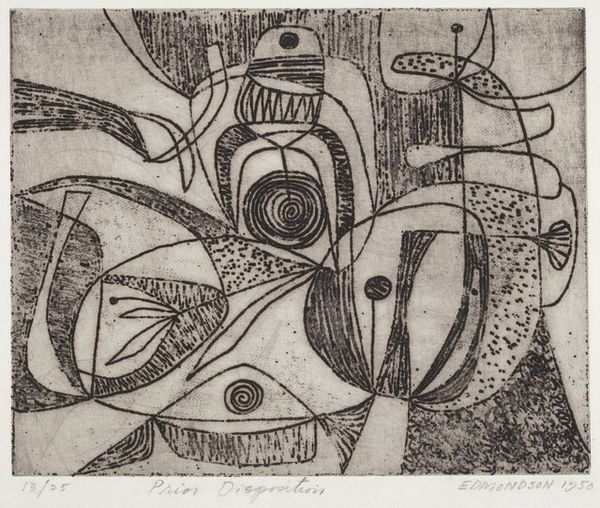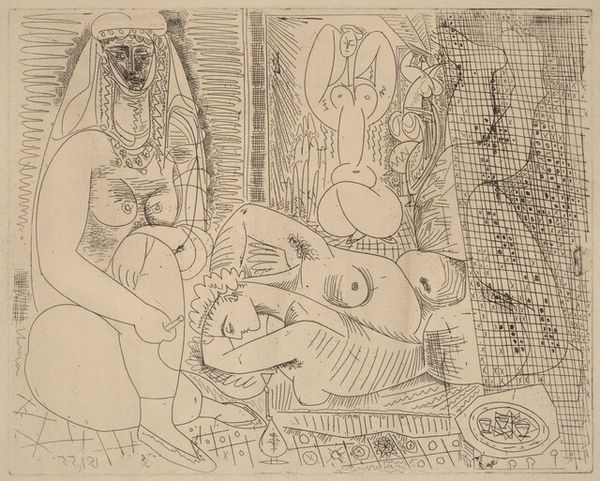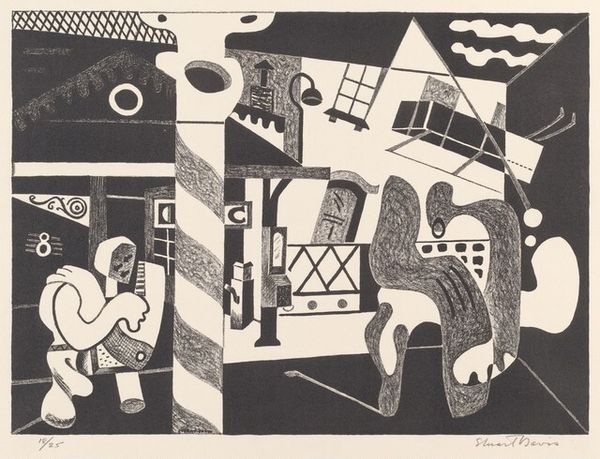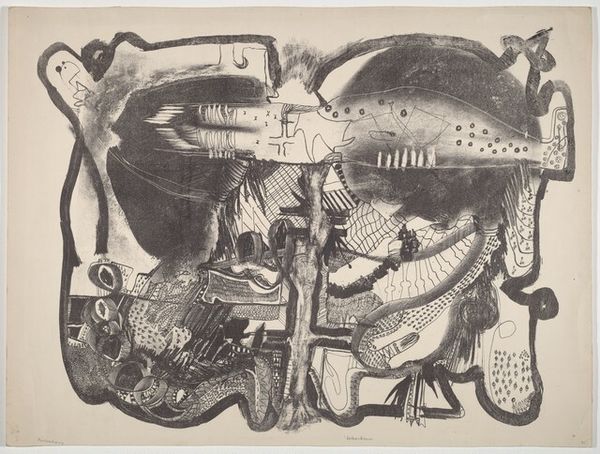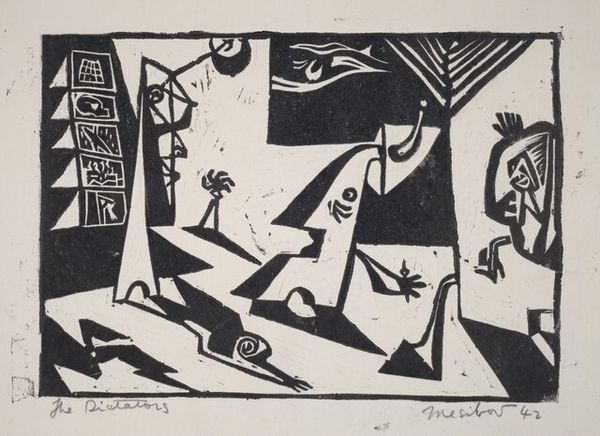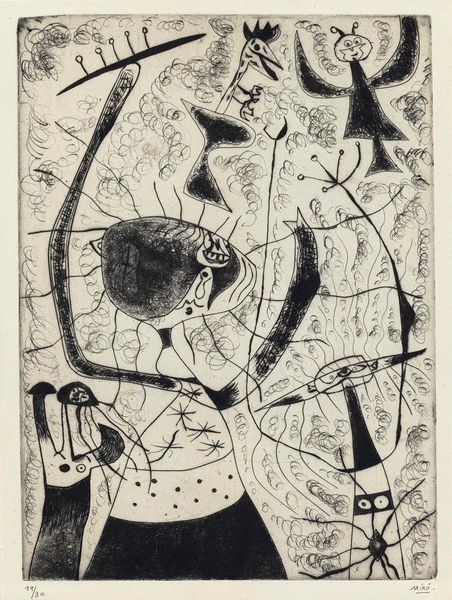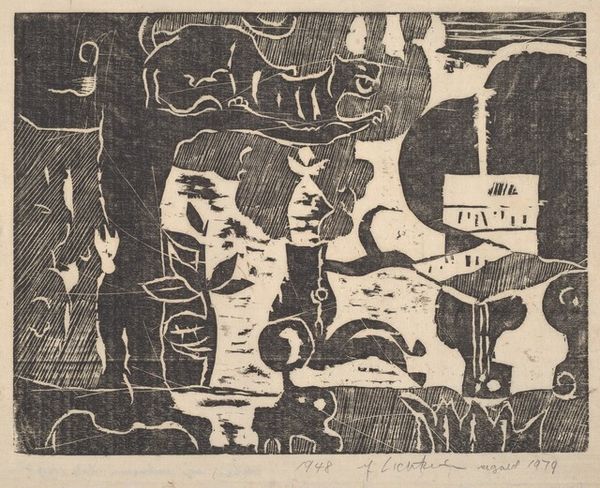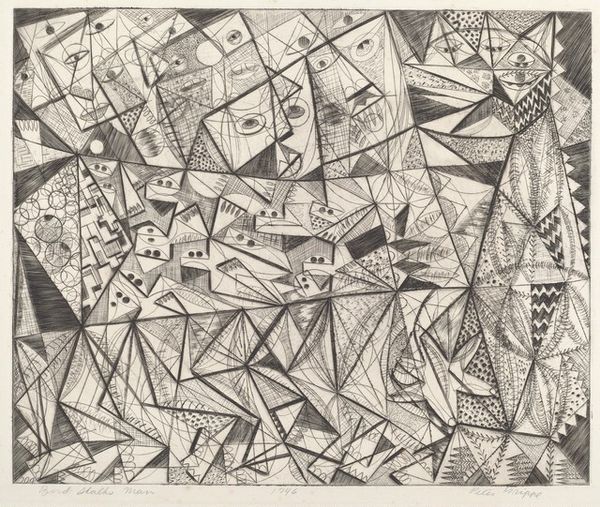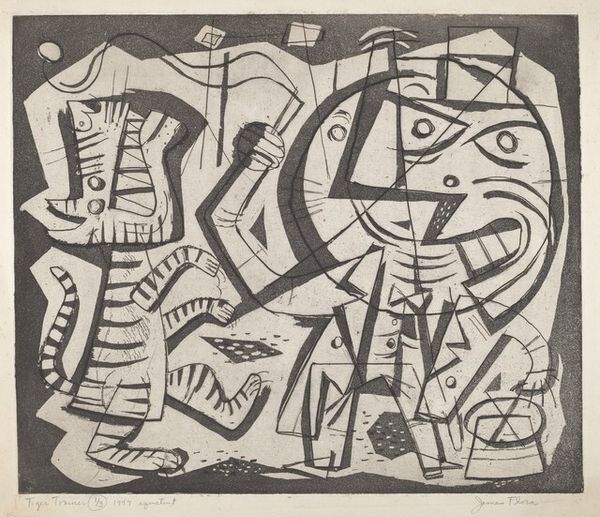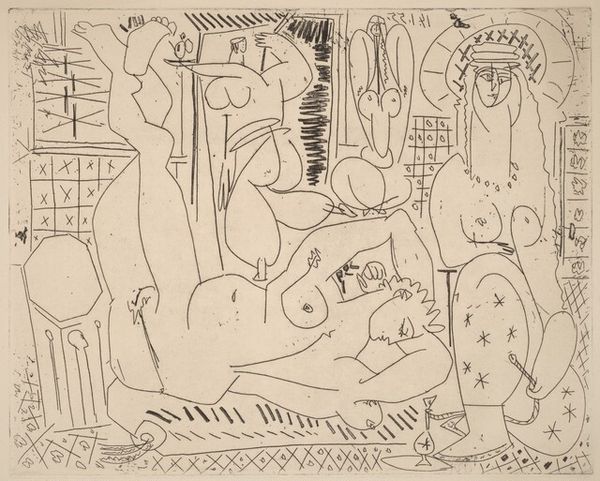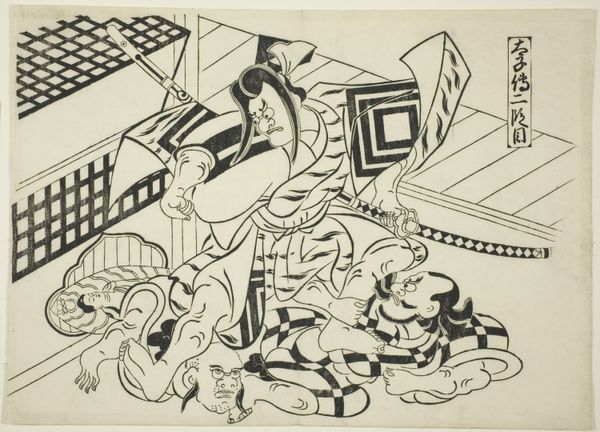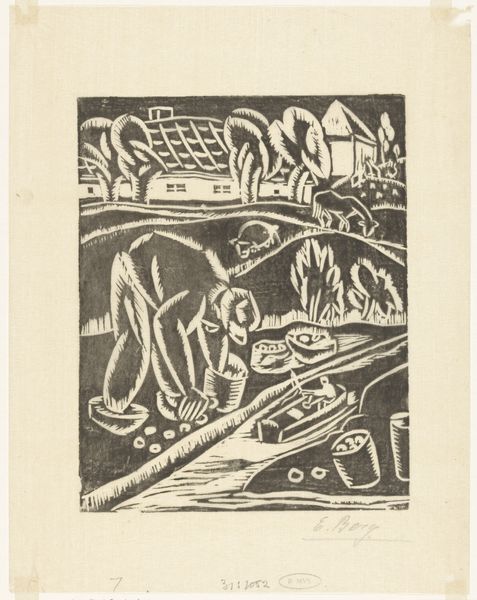
drawing, print, etching
#
drawing
# print
#
etching
#
figuration
#
abstraction
#
line
Copyright: National Gallery of Art: CC0 1.0
Curator: Here we have Lenore Simon's "Untitled (Circus Theme)" from 1951, an etching print filled with whimsical figures. What are your initial thoughts? Editor: It feels chaotic, almost unsettling despite its circus theme. The lines create a sense of frenetic energy, like a clown's exaggerated gestures. Curator: I see the circus as a recurring symbol in modern art, often used to explore themes of performance and identity. Here, the abstracted forms hint at familiar figures. We have a ringmaster, perhaps, with his top hat and an umbrella? The figures and symbols appear fragmented yet retain a kind of archetypal recognition. The circus is an exaggeration of ordinary life – where is the boundary of spectacle in relation to political issues? Editor: And what about the seeming contradiction between line and form? I notice, for example, how Simon has made visible the grid – a kind of map – that is obscured behind traditional representation. It makes the whole picture-making exercise an odd, unintegrated pastiche of abstract geometry and recognisable figures. It begs questions about gendered experience. Was Simon looking at the Bauhaus project? What were the conditions of women at the time? Curator: That's a compelling point. The lack of detail, paradoxically, draws my attention to the psychological aspect. The figures, while stylized, evoke strong emotions. The circus resonates with cultural archetypes: clowns representing sadness, acrobats as risk-takers. I find an echo of collective dreams and anxieties rendered through accessible iconography. The ringmaster's face seems strained, suggesting a deeper vulnerability beneath the joyful surface. Is this print – given that the artist has designated it an “artist’s proof” – representative of her larger ouevre? What is Simon trying to tell us, by choosing this image? Editor: I wonder about that seeming absence of contextual background – where the composition itself serves as comment on post-war social change. There's a visible absence, or stripping-down, that seems a visual and ideological imperative. It speaks to the post-war political agenda, or some element in its unconscious. Curator: The strength of the etching lies in its openness. The visual puzzle encourages engagement with its historical and psychological context, prompting endless possible interpretations. Editor: Absolutely. It resists simple categorization. I find that compelling – how it situates this visual, graphic language amidst larger dialogues around visibility, agency and identity.
Comments
No comments
Be the first to comment and join the conversation on the ultimate creative platform.
